The table top is the main working surface in the kitchen. It is subjected to different mechanical effects, as well as temperature drops, so it is important to choose this type of coating for a kitchen headset.
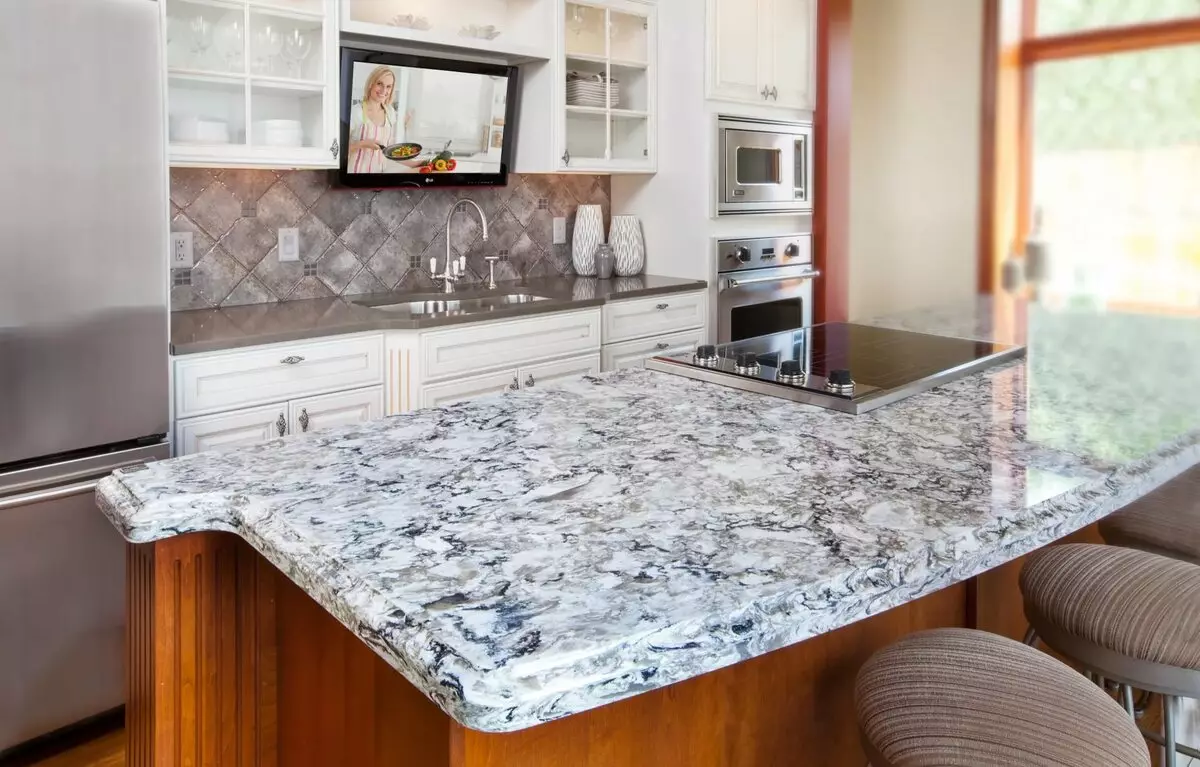
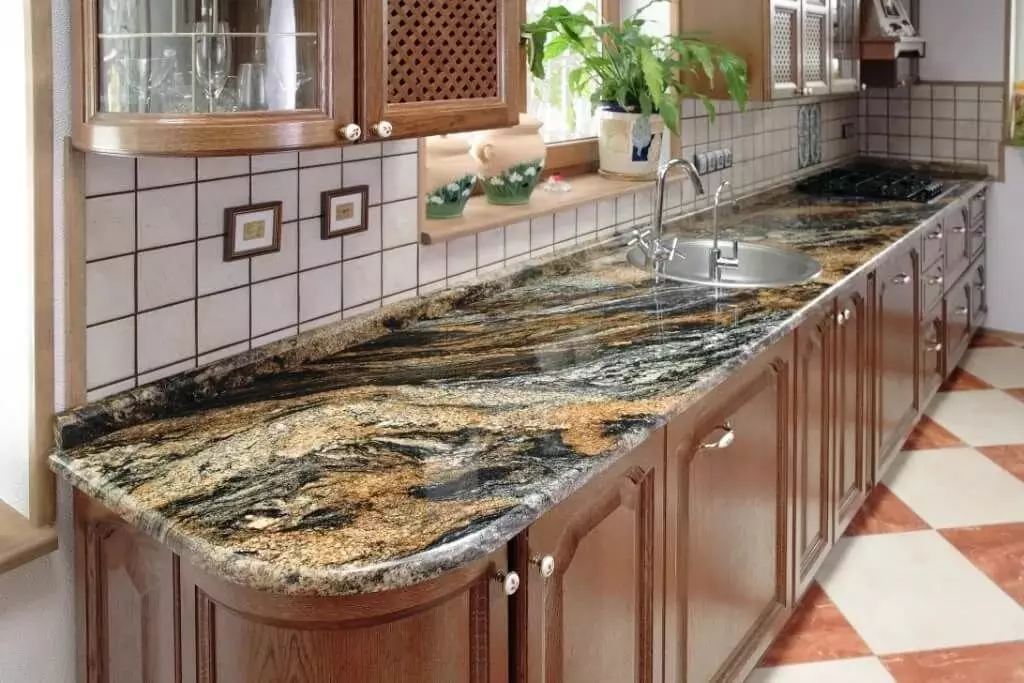
Choice rules
Choosing this coverage, It is important to know that the standard thickness equals 40 mm. However, it is possible to find a tabletop with a thickness of 28 to 100 mm. To find the thickness of the product you need, It is necessary to repel from what exposure it will be subject to.
Important when choosing are the size of the room for which the countertop is needed. In small kitchens of solid thickness, the countertop will look terribly.
Mature and method of fastening the product to the kitchen headset, and the overall aesthetic type of construction. In addition to the method of fastening, it is worth paying attention to its weight.
When choosing, the material from which the countertop is manufactured, because not only the price, but also the service life depends on it.
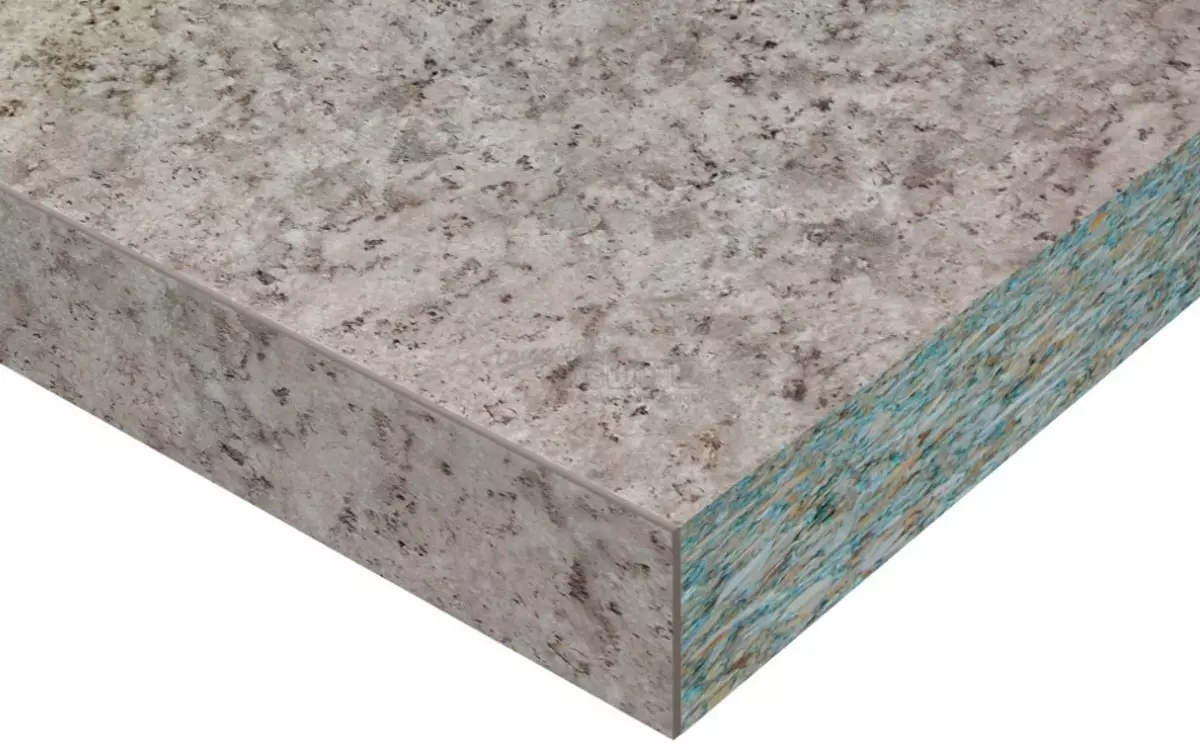
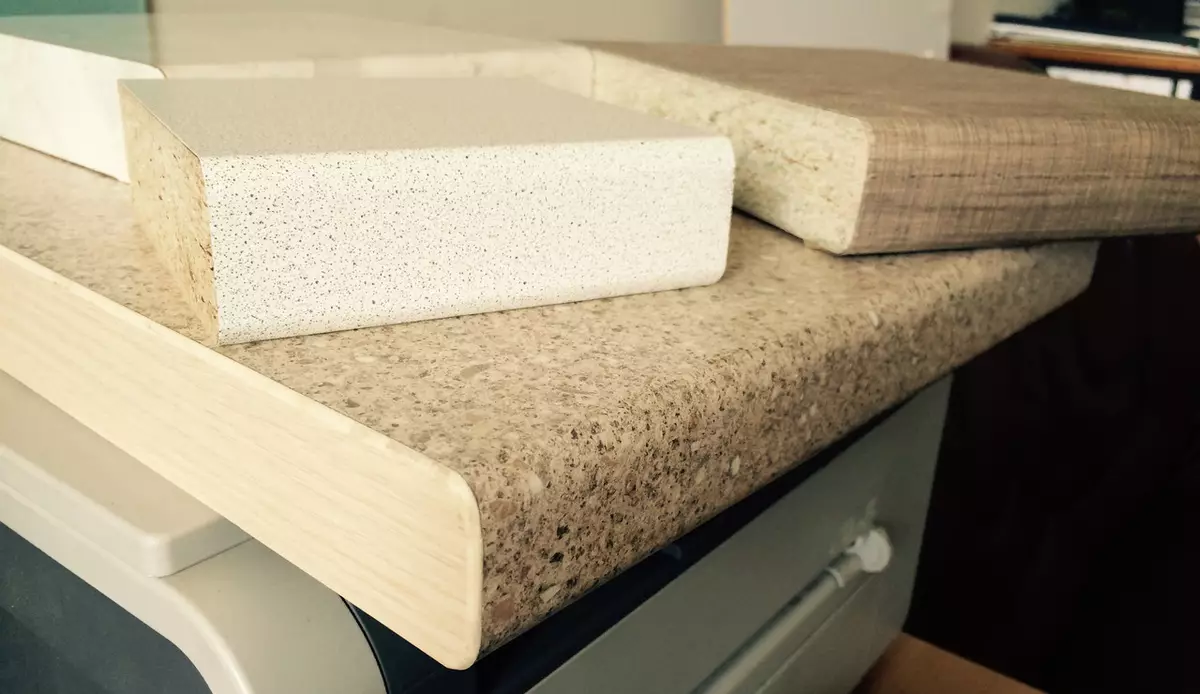
Modern countertops in the kitchen should be:
- moisture-resistant;
- shock-resistant;
- comfortable;
- Hem-resistant.
The width of the tabletops is usually 60 cm, but in some individual orders it can vary from 80 to 120 cm.
It is worth considering the shape of your kitchen headset, as well as what technique you are going to install. If you refuse a whole plate and selection of worktops under the cooking panel it is worth remembering that they should have the same indicators.
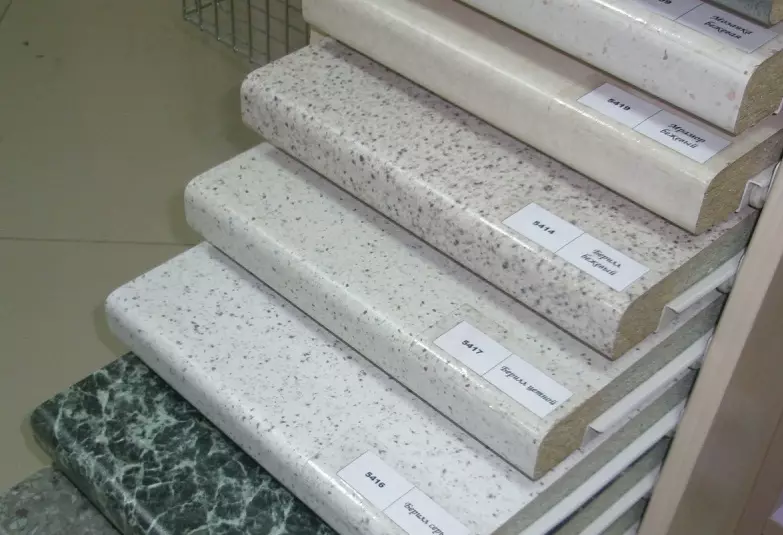
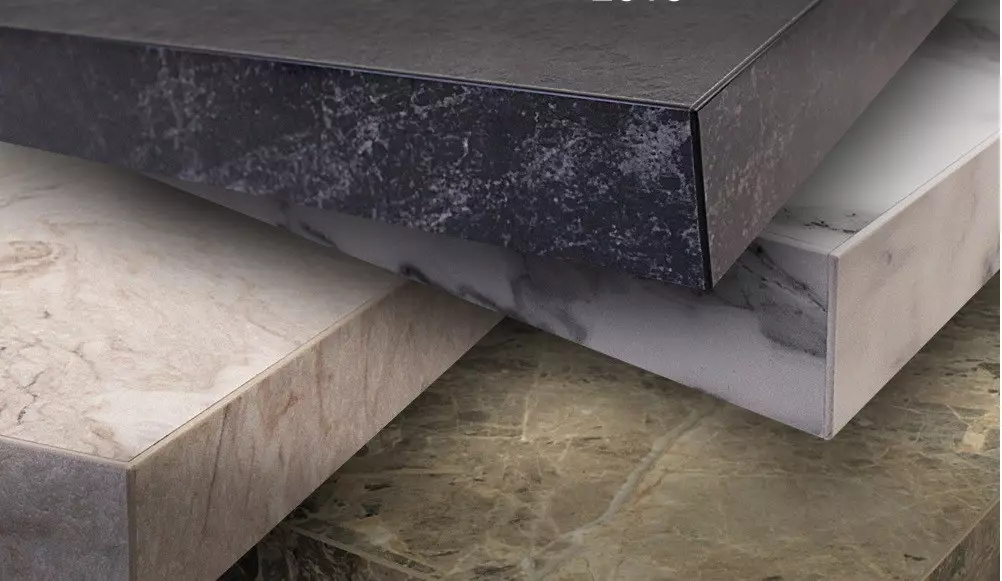
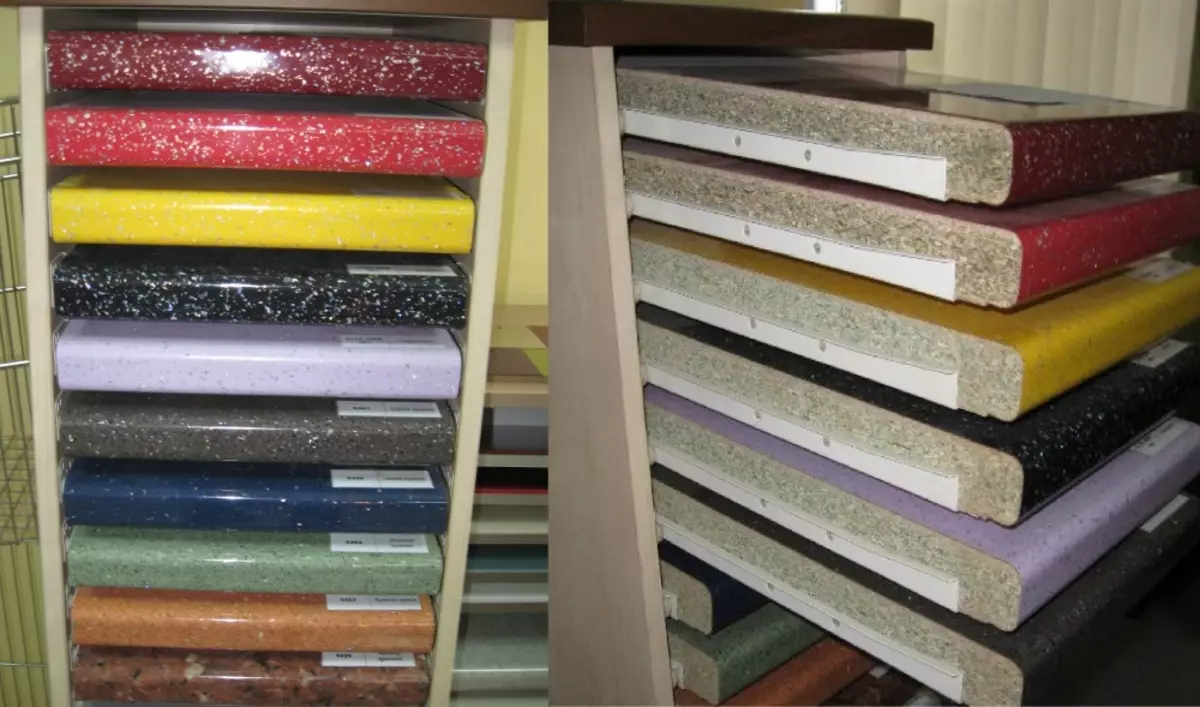
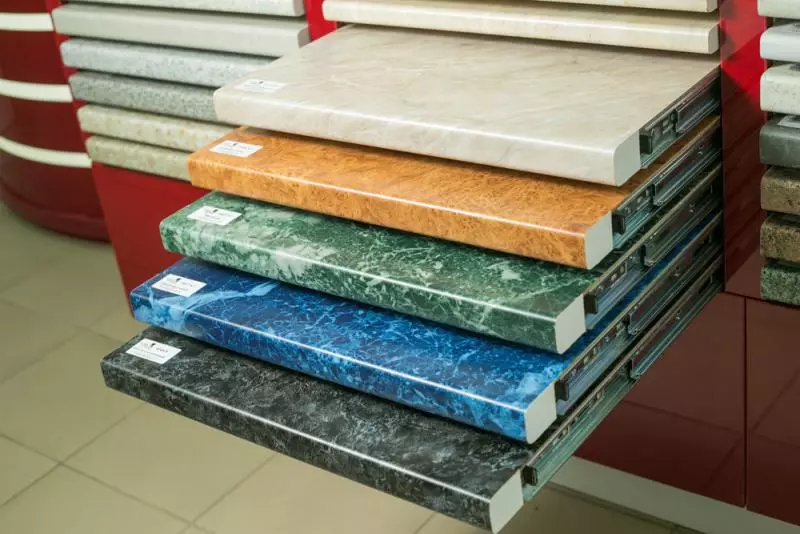
Directly proportional to the dependence of the thickness of the product from its price, but the thicker the tabletop, the more stronger.
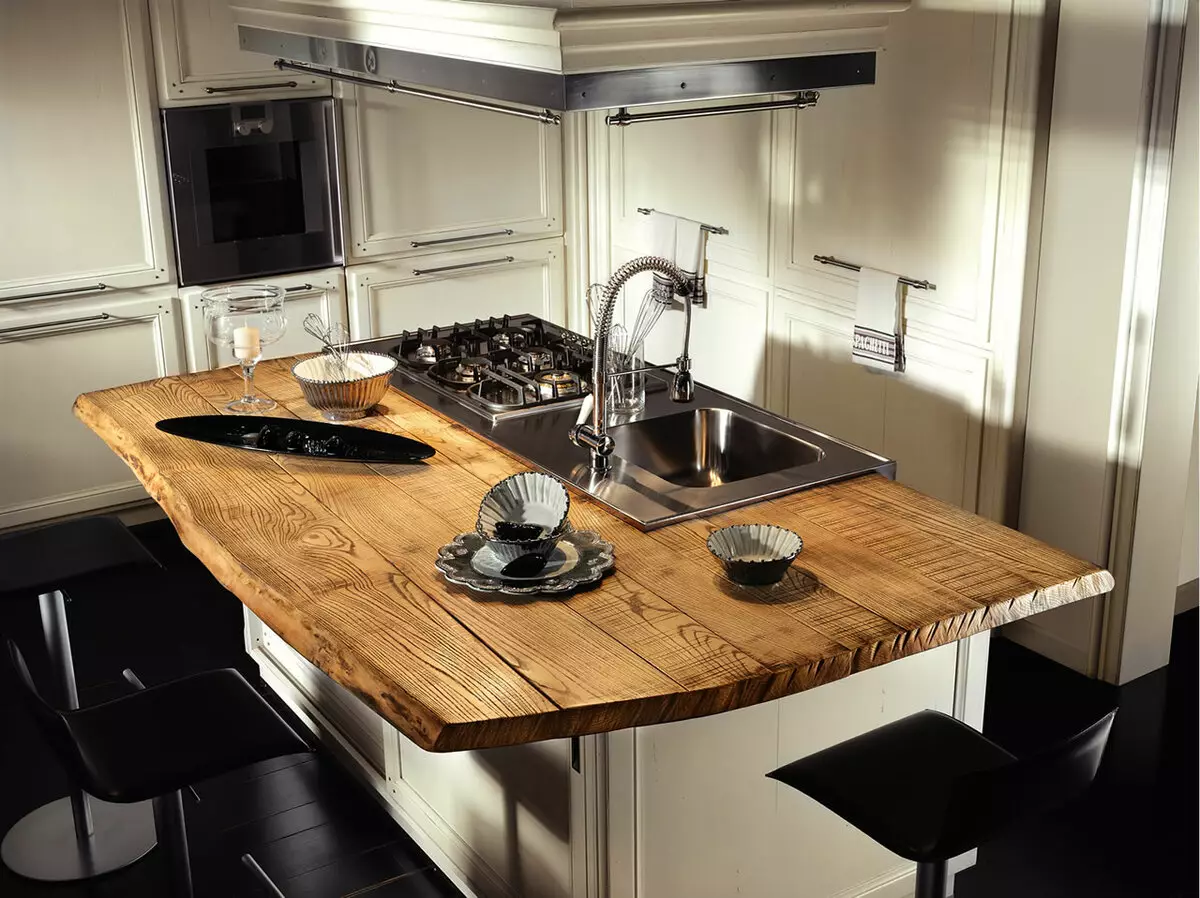
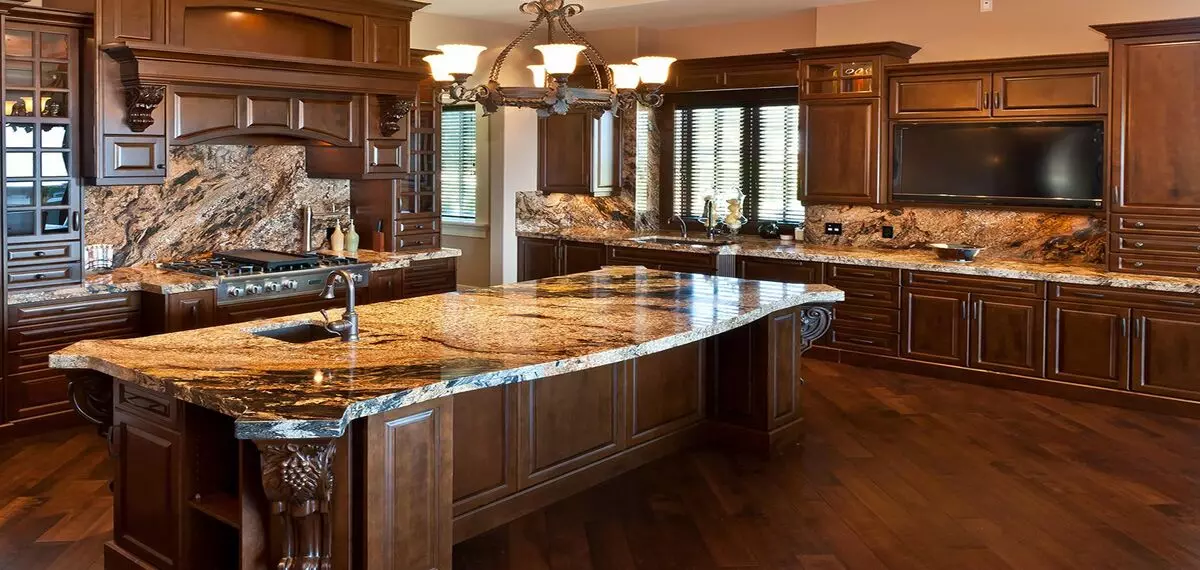
Materials
The most popular and common is LDSP and MDF. Countertops from such materials usually perform a thickness of 38 mm and 28 mm.
Laminated plates are of different colors and textures, but they are not so durable as, for example, a tree. However, the cost of tabletops from them is significantly lower than from the natural tree. And even in cases where they are manufactured by individual order. The maximum length of the laminated plate is from 3000 to 3500 mm. The width of such countertops is usually limited to 600 mm, Therefore, it is worth remembering by ordering an individual design of the kitchen that products from this material cannot be increasing.
Countertops from MDF will not suit if the kitchen has angles and there will be joints, because when combining such a surface, the connection place is very noticeable and will be a weak point of the tabletop. When moisture gets into the joint, he will swell, which will lead to deformation and replacement of the table top.
If you are not too limited in the means and want your kitchen to look impressive, it is worth looking at natural materials, such as a tree or stone.
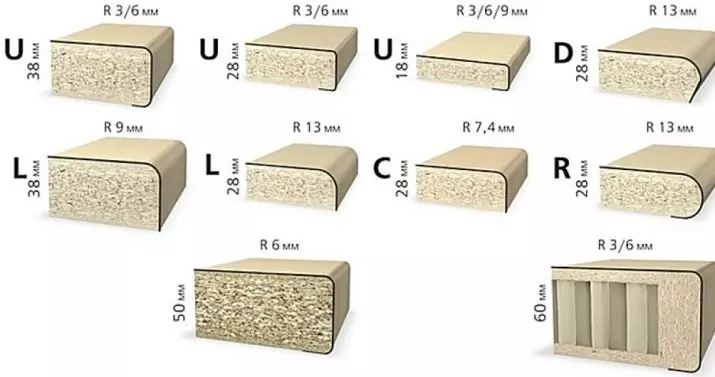
Wooden
Wooden countertops are usually made from the following tree breeds:
- oak;
- beech;
- larch.
Wood is covered with special water repellent means to avoid her swelling from moisture. However, such a product requires special care, but it is prohibited when cleaning the use of household chemicals. The standard thickness of the wooden table top is usually 20 mm, in some cases 40 mm. Sometimes because of the peculiarities of the kitchen, the countertop must be more thin. In this case, it is possible to produce a product with a thickness of 18 mm.
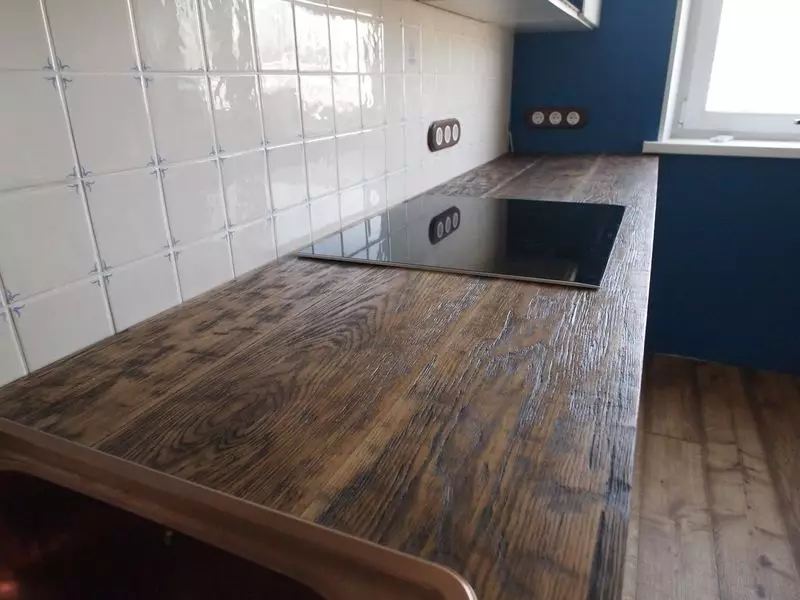
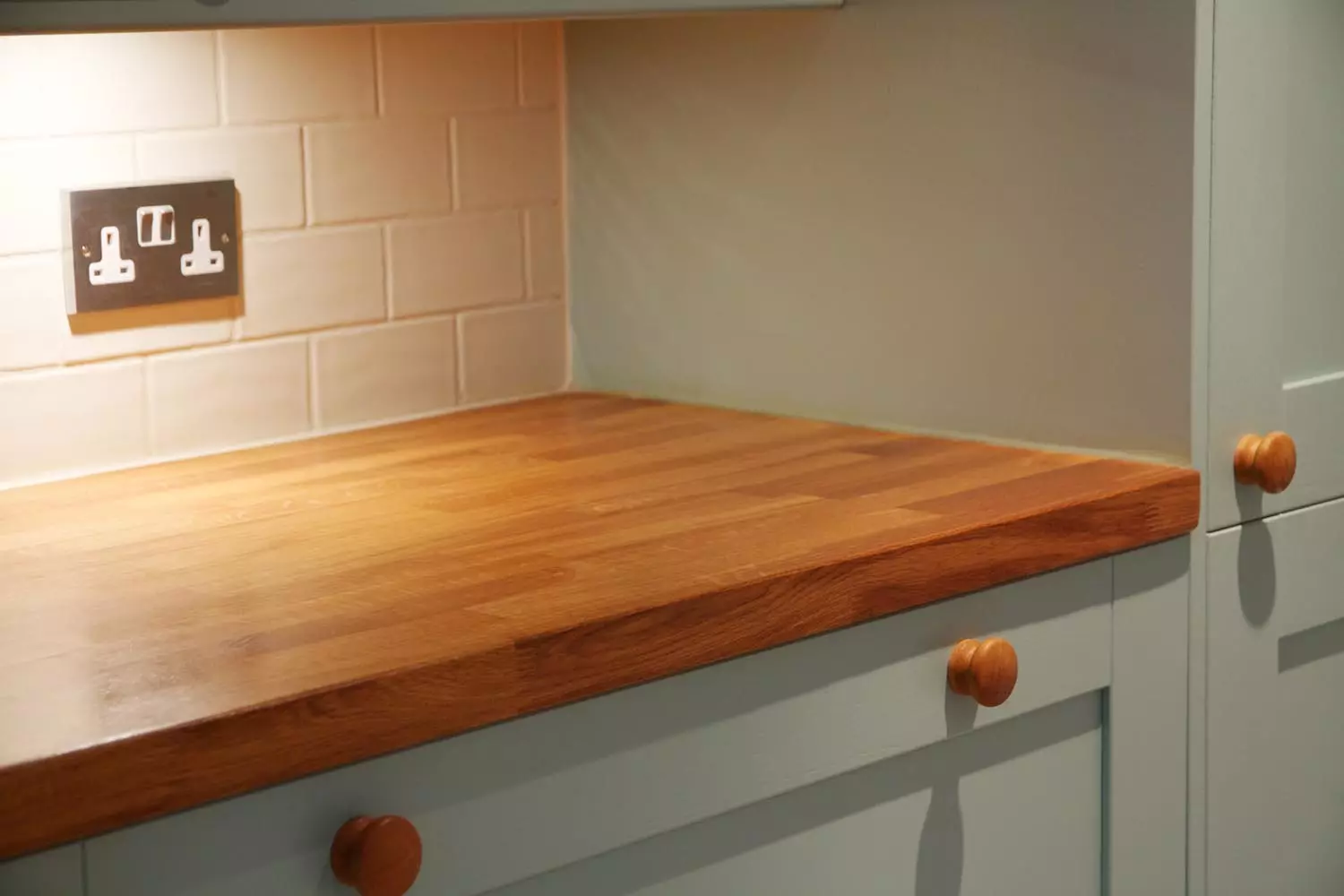
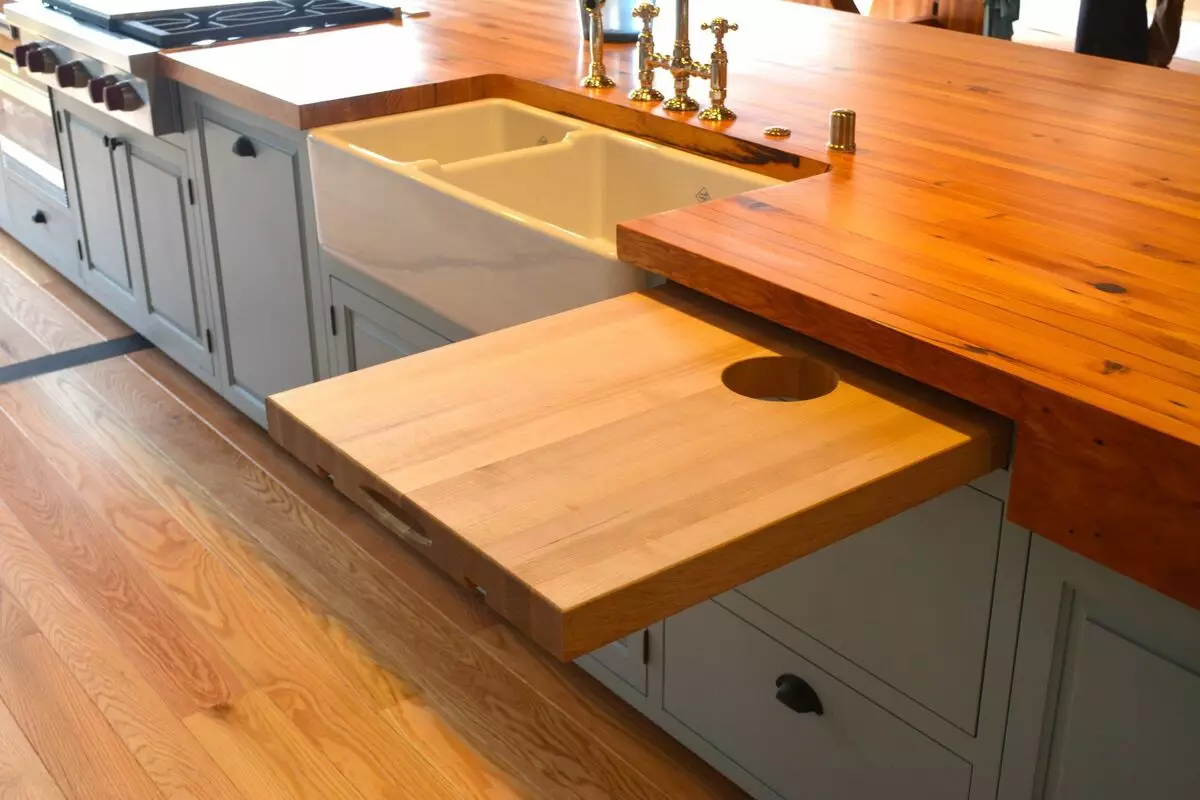
From natural stone
Choosing a tabletop from a natural stone, it is worth understanding that it has a rather large one weight, therefore the frame of the kitchen table, the couch or the floor cabinet should be durable and withstand loads up to 80 kg per square. m. Plus such countertops is their uniqueness in terms of drawing . Raw materials for products usually serves marble or granite. Usually, Thickness varies from 20 to 30 mm for marble and 30-50 mm for granite. For tabletops from marble Standard in thickness 26 mm.
By cons of stone material include:
- high price;
- formation of chips and small cracks;
- complexity in care;
- The inability to get rid of some types of pollution.
An excellent alternative to table tops from natural stone will be artificial stone products. By nature, an artificial stone represents a liquid polymer with various splashes of colored granules. Due to the fact that he has a liquid base, apply it mainly in those places where rounded corners are needed or a curved view of the tabletop.
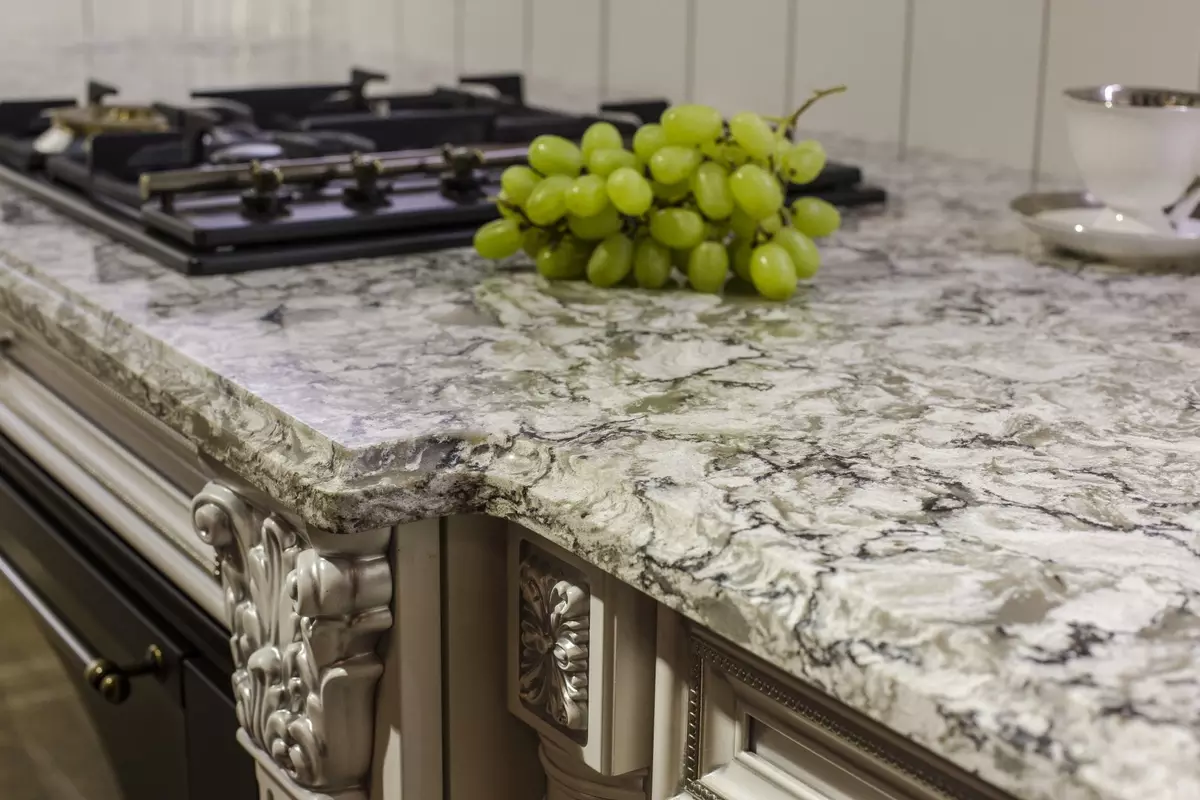
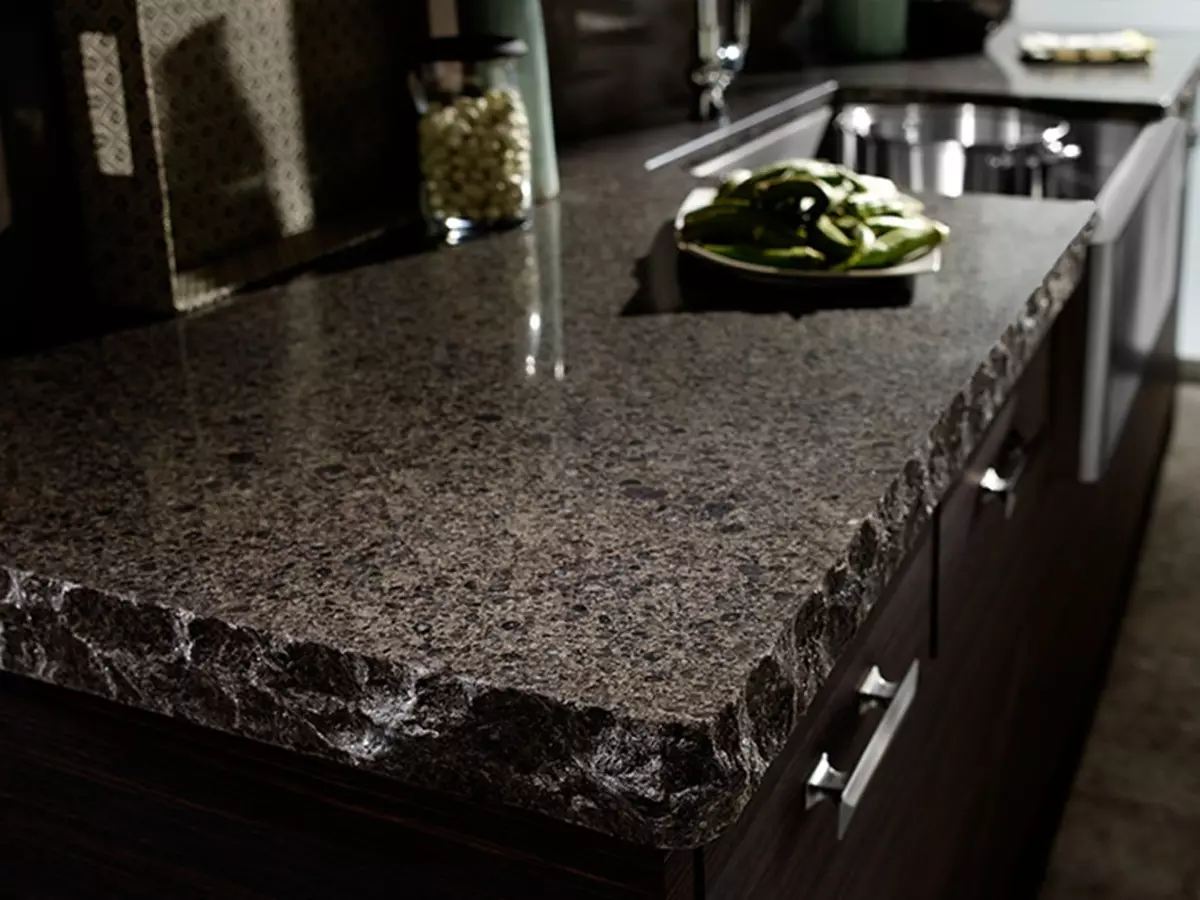
Algomerat.
Another cheapest substitution of natural stone will be the algaerat. Its base also consists of liquid polymers, but its composition includes crumb of natural stones, such as quartz or border. According to its properties It is practically not inferior to natural material - only by hygroscopicity. But at the same time it is a more durable material.
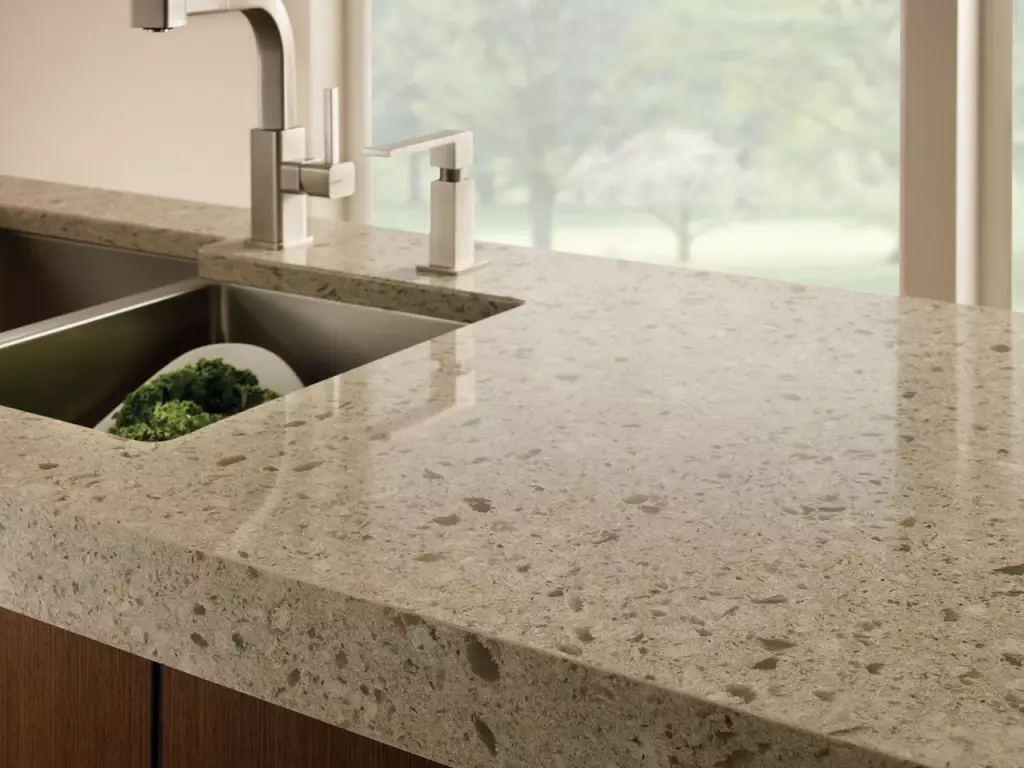
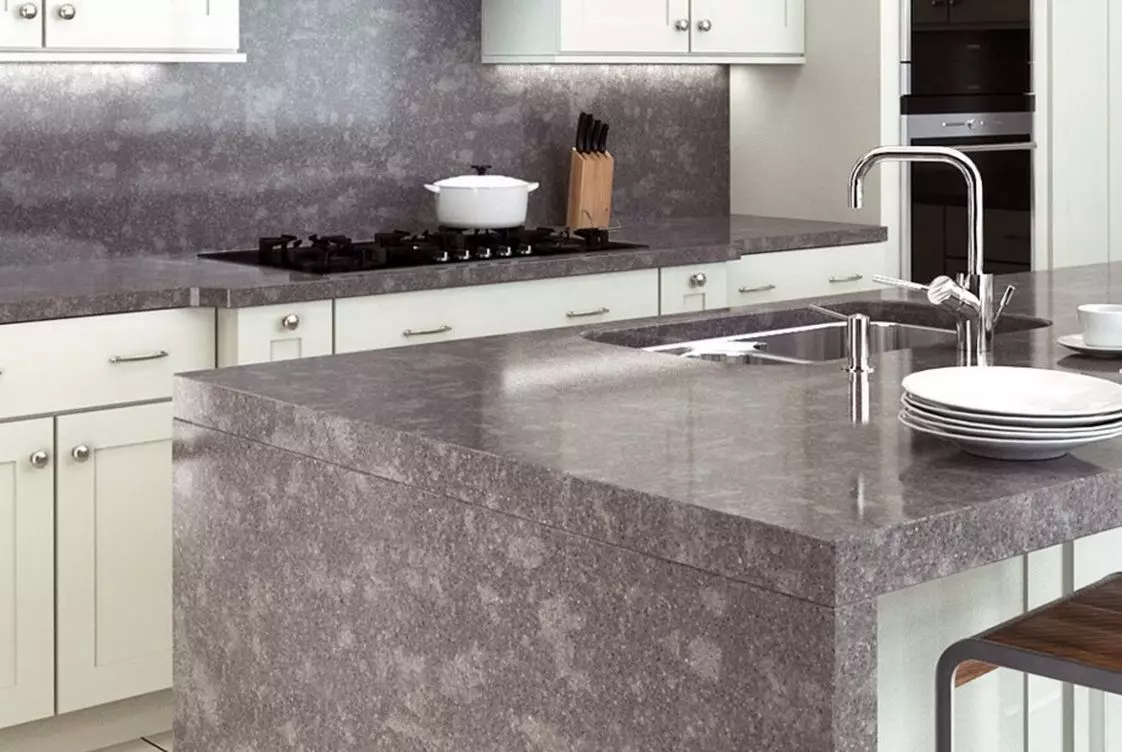
From acryla
You can stop your choice on the acrylic countertop. One of the advantages is that the joints between the part of the headset are invisible. Such a product has no restrictions on its size, therefore When using this material, you can implement any idea of the designer and the customer. The standard sheet thickness of such countertops has a size of 12 mm, so it is increased to give greater strength with plywood or chipboard.
In some cases, the choice of kitchen countertops is rather unusual, for example, you can meet such materials:
- glass;
- stainless steel;
- Ceramic tile.

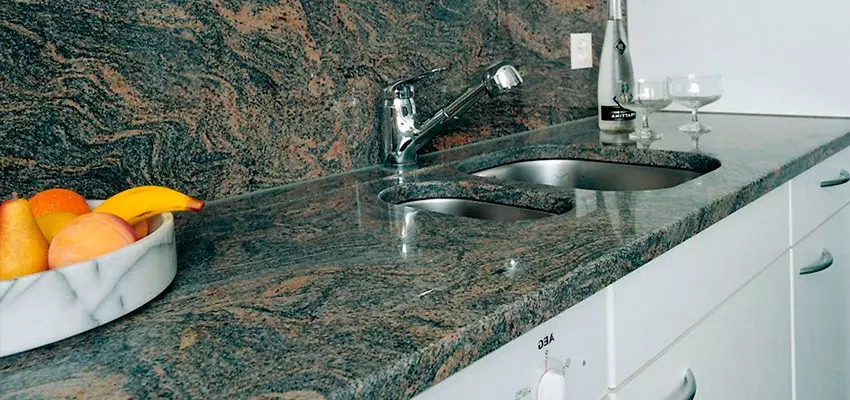
Stainless steel
Choosing such a coating for a kitchen headset, you can save, but not losing the strength and durability of the product. Stainless steel products do not absorb fat and dirt, which makes it easily cleaning them. The surface of such a table top is glossy that, with correct placement of lighting, it will make it possible to create a brighter kitchen - this will help the reflection of light from steel.
Often, such a coating is applied on professional kitchens, which is explained by simplicity of care and durability. When using such countertops in apartments, it is recommended to dilute the interior with natural wood to soften the overall setting.
Pros stainless steel products:
- durability;
- do not require special care;
- well withstand mechanical loads;
- Safe.


Glass
Glass countertops are rarely applied, but create a special style in the interior. The thickness of them should be at least 16 mm . These products made of durable tempered glass are performed. Sometimes apply a substrate to give strength. The glass countertop can be an excellent highlight of the interior, as the kitchen appears the opportunity to make a whole composition in the glass. In addition, the countertop can be an additional light source if it is to attach to the LED tape.
Another option is to apply to the glass photo printing. This will make the interior more original and unique.
Pros Product:
- safe;
- wear-resistant;
- Easy to care;
- Resistant to temperature drops.
However, the cost of such a product is quite high and depends on the type of glass.


From ceramic tile
The complexity of such a countertop is that it is difficult to choose the tile of the required size. Typic surfaces are usually facing, so the primer is used for better clutch, and then adhesive for tiles are applied. It is possible to use this countertop already 12 hours after laying tiles. But experts recommend waiting for a day for better drying of glue and clutch surfaces.
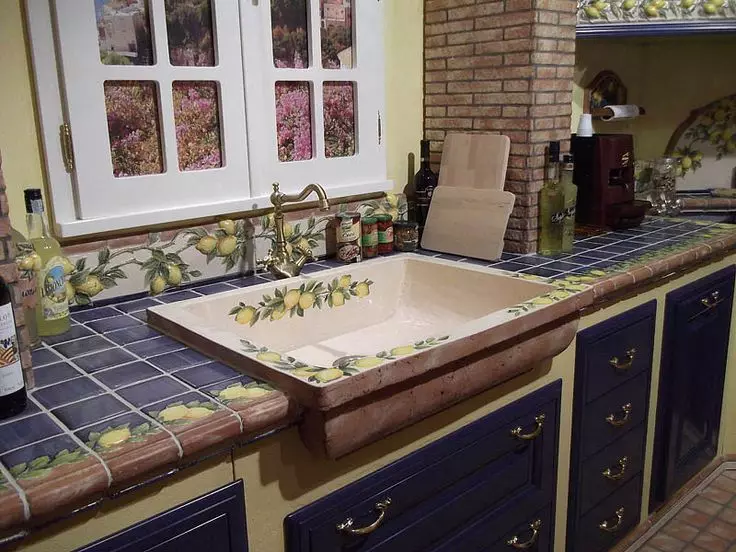

Combination in the interior
If you are the owner of a big and spacious kitchen, then you should stop your choice on the tabletop of granite or marble . Such a thick countertop will give the kitchen a noble view and will become an excellent addition to the interior styles as High tech or modern.
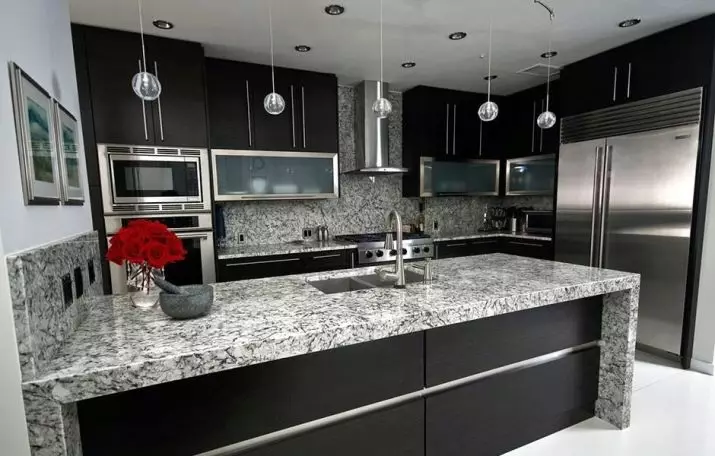
For interior in style Country An excellent supplement will be a natural wood product, since it will emphasize the naturalness and authenticity of this style. Plus, it is an environmentally friendly material that is welcomed in this interior design. In some interiors, designers leave the unprocessed edge of the wood as an addition to style.

Unusual materials of countertops - for example, glass or stainless steel - will be an add-on for such styles as Loft or Scandinavian.

Colors and shapes
For LDSP it is better to choose a dark color and a matte surface. After all, with time on the product, stains from water appear, and such a color will help them hide them. In addition, it is not so noticeable scratches and scratching, which arise over time.
When using an artificial stone, it is better to choose the one whose enclosures were made by smaller crumb, because there are practically not visible damage on such a surface.

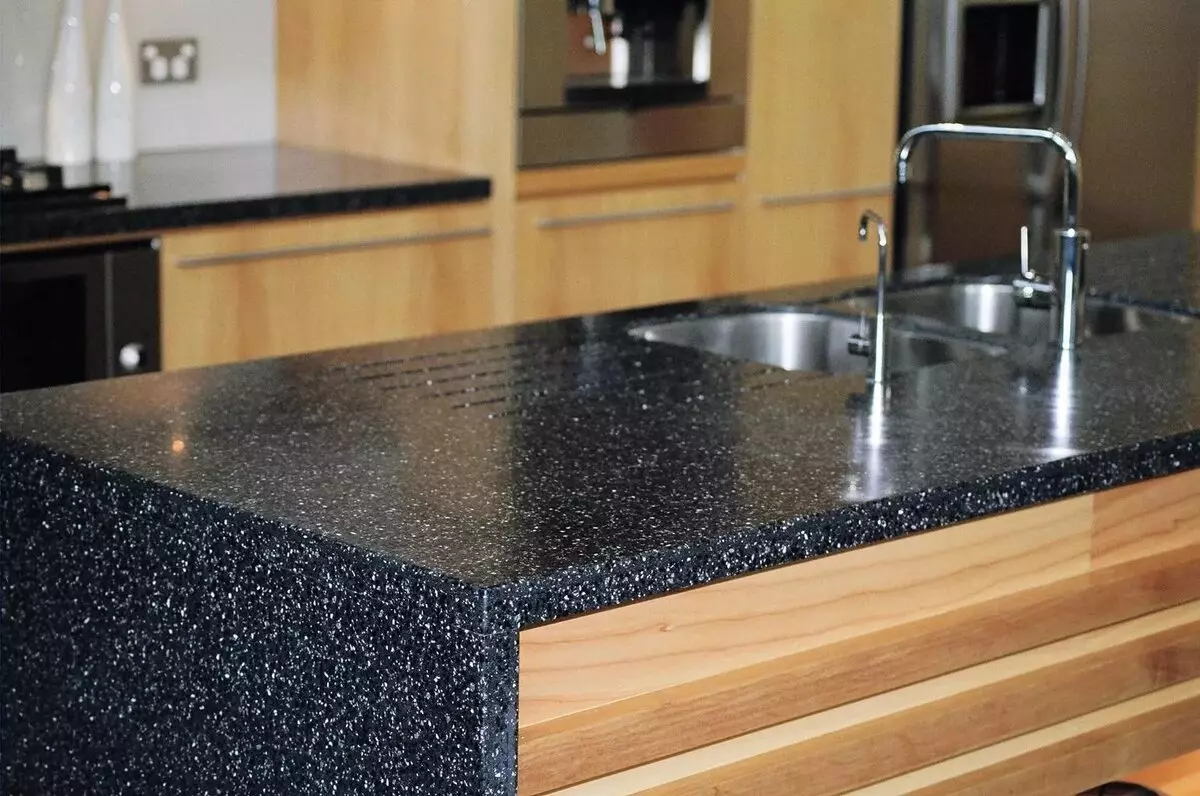
In the video you will receive useful tips when choosing a tabletop.
